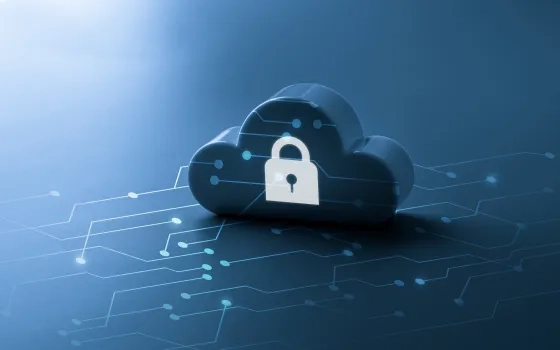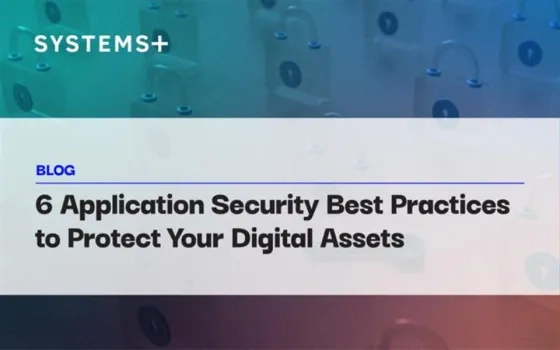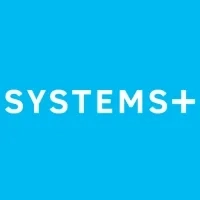Whether you understand cloud computing or not, if you are savvy enough to use a smartphone or a laptop, chances are you already use cloud computing services. For example, if you have used Amazon.com or any Google Application or Microsoft 365 Suite or even streamed movies and songs online - you have used cloud computing services.
Microsoft defines cloud computing as the "delivery of computing services—including servers, storage, databases, networking, software, analytics, and intelligence—over the Internet ("the cloud") to offer faster innovation, flexible resources, and economies of scale. You typically pay only for cloud services you use, helping you lower your operating costs, run your infrastructure more efficiently, and scale as your business needs change." Basically, companies can use the services mentioned above through the internet as opposed to their on-premise server.
Due to lower operating costs and other efficiency factors, most companies, no matter the size, are quickly migrating to the cloud. This has led to many criticalities arising in the management of cloud architecture. Specifically, the security aspect needs utmost attention, mainly in application domains where integrity, privacy, and confidentiality of information must be guaranteed.
What is Security as a Service (SECaaS)?
Wikipedia describes Security as a Service (SECaas) as a "business model in which a service provider integrates their security services into a corporate infrastructure on a subscription basis." This security as a service is generally more cost-effective than most corporations provide on their own when the total cost of ownership is considered. To understand, consider SECaaS as a SaaS (Software as a Service) model where the service provider offers cybersecurity-focused services to aid with customer's networks and IT systems.
Why You Need Security as a Service (SECaaS)?
According to IDC's Cloud computing study, 92% of organizations have at least some part of their IT environment as cloud-based. Added to that, more than 55% of the organizations currently use multiple public clouds. The survey also found that Technology decision-makers believed privacy and security challenges to be the major hurdles preventing them from taking full advantage of their public clouds. 'The State of Cloud Security 2020', a survey by Sophos, found almost 2/3rd of the organizations (70%) hosting data/workloads in the public cloud experienced a security incident. Moreover, Multi-cloud organizations reported more security incidents than those using only a single platform.
Types of SECaaS:
A lot of work has been done regarding the security of the cloud and the data within it. However, there was still a dearth of best practices guidelines to follow during developing and implementing an elastic cloud model. The Cloud Security Alliance (CSA) solved this problem by breaking the SECaaS into various categories:
Identity and Access Management (IAM):
IAM provides controls for access intelligence, identity verification and access management. It includes processes such as provisioning/de-provisioning of accounts, directory services, authentication, token management etc
THREATS ADDRESSED:
- Identity theft
- Unauthorized access
- Privilege escalation
- Insider threat
- Non-repudiation
- Excess privileges / excessive access
- Delegation of authorizations/entitlements fraud
Data Loss Prevention:
This is a preventive measure that mainly ensures that data (structured and unstructured) remains under control. It deals with monitoring, protecting, and verifying the security of data in the cloud and on-premises. Its functionalities include- data labeling & classification, identification of sensitive data, Structured data matching, SQL regular expression detection etc.
THREATS ADDRESSED:
- Data loss/leakage
- Unauthorized access
- Malicious compromises of data integrity
- Data sovereignty issues
- Regulatory sanctions and fines
Web Security:
This is a reactive and real-time protection mechanism against online applications offered via the cloud by redirecting web traffic to the cloud provider. It provides services like web filtering, spyware & bot network analyzer, phishing site blocker, email security etc
THREATS ADDRESSED
- Keyloggers
- Domain Content
- Malware
- Spyware
- Bot Network
- Phishing
- Virus
- Bandwidth consumption
- Data Loss Prevention
- Spam
Email Security:
As the name suggests, email security provides control over inbound and outbound emails, thus helping in enforcing corporate policies. Its functionalities include accurate filtering to block spam, flexible policies to define mail flow, encryption, etc.
THREATS ADDRESSED
- Phishing
- Intrusion
- Malware
- Spam
- Address spoofing
Security Assessments:
These are audits of cloud services or assessments of on-premises systems via cloud-provided solutions generally done by third parties. Some of the features are Risk management, compliance, technical compliance audits, application security assessments etc
THREATS ADDRESSED
- Inaccurate inventory
- Lack of continuous monitoring
- Lack of correlation information
- Lack of complete auditing
- Failure to meet/prove adherence to Regulatory/Standards Compliance
- Insecure / vulnerable configurations
- Insecure architectures
- Insecure processes/processes not being followed
Intrusion Management:
This process uses pattern recognition to detect and react to statistically unusual events to stop/prevent an intrusion in real-time. Generally, it provides identification of intrusions & policy violations, automatic/manual remedy actions, updates to address new vulnerabilities & exploits.
THREATS ADDRESSED
Security, Information and Event Management (SIEM):
This is a detection process in which the systems accept log/event information. This information is then analyzed and is used to report and alert on events that may require intervention. It provides real-time log & event correlation, forensic support, log normalization, compliance reporting etc
THREATS ADDRESSED
- Insecure Interfaces and APIs
- Malicious Insiders
- Shared Technology Issues
- Data Loss and Leakage
- Account or Service Hijacking
- Unknown Risk Profile
- Fraud
- Abuse and Nefarious Use
Encryption:
This process makes the data indecipherable by managing encryptions, hashing, digital signatures, key exchanges etc. Its functionalities include- data protection, data validation, message authentication, data time-stamping, code signing, forgery detection etc
THREATS ADDRESSED
- Failure to meet Regulatory Compliance requirements
- Mitigating insider and external threats to data
- Intercepted clear text network traffic
- Clear text data on stolen/disposed of hardware
- Reducing perceived risks
Network Security:
This refers to various services that help in distributing, managing, and monitoring security controls in a network. The functionalities are traffic/NetFlow monitoring, security monitoring, data threats, access control threats, security gateways, DoS protection/mitigation etc
THREATS ADDRESSED
- Data Threats
- Access Control Threats
- Application Vulnerabilities
- Cloud Platform Threats
- Regulatory, Compliance & Law Enforcement
Benefits of SECaaS
- Professional Expertise- Many organizations lack domain knowledge or simply struggle to train in-house security professionals for various reasons. SECaaS providers are highly skilled, domain expert technicians who help enterprises enhance their security capabilities.
- Knowledge sharing-Generally, SECaaS providers will be servicing multiple clients simultaneously. So, when any issue arrives with one client, the remedy for that kind of threat can be used as a preemptive defense strategy for other clients as well.
- Deployment flexibility- As SECaaS is itself a cloud-native model, it is probably the best suited to handle evolving workplaces and cloud migrations. It can manage flexible deployment models without the complexity of multi-site hardware installations.
- Extra layer of protection- SECaaS acts as a preventive service to intercept various attacks before they hit the enterprises. For example, it adds an extra layer of Firewall or spam filters between the organization and attackers.
- Scaling and cost- Flexible cost of the SECaaS services allow enterprises to pay only for the services they use. This helps them concentrate on their core competencies while leaving the security concerns to the experts.

Since many companies are adopting cloud technologies but are still ill-informed about the security aspect, they need their service providers to look after their Cloud Security needs. There are various cloud security issues such as data breaches, distributed denial of services attacks, phishing scams, etc that SECaaS providers can efficiently address. Also, developing in-house cloud security experts is costly and requires regular upskilling and training of the employees. Partnering with a trusted SECaaS service provider can help organizations focus on their core business area while the partner will help keep their digital assets secure.



















